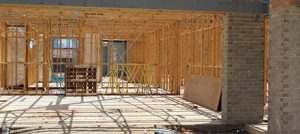A housing stimulus plan that includes $40,000 cash grants for people building a new property as its centrepiece has been released by the Master Builders Association (MBA). Current industry forecasting indicates new home building will fall by almost 50%, putting half a million jobs at risk over the next year. Source: Timberbiz
The MBA’s plan is part of a $13.2 billion building and construction stimulus action will would stimulate more than $30 billion in new economic activity and create more than 100,000 new jobs across the economy.
“We are seeking stimulus not subsidies from government, we want National Cabinet to urgently implement this independently modelled stimulus package and establish a special task force to fast track commencement of construction activity,” MBA CEO Denita Wawn said.
Modelling commissioned from Ernst & Young indicates that a $13.2 billion investment by governments in a Master Builders proposed stimulus package would mean:
- $30.9 billion in GDP from the $13.2 billion investment,
- Creation of 105,500 jobs in construction and across the economy,
- $17.6 billion in expanded construction activity (new dwelling starts, renovations and commercial construction activity).
“Building and construction is shaping up to be one of the industries worst hit in the long term by the COVID-19 economic crisis,” Ms Wawn said.
“We know from previous downturns that it takes four times longer for our industry to recover than the rest of the economy.”
She said the economic crisis was not the result of a market failure; it was the result of the lockdown imposed by governments in response to the public health emergency of COVID-19.
“We are asking our political leaders to show the same courage and vision in supporting our industry as they showed in responding to the health emergency,” she said.
Work for builders and tradies in 2020/21 was fast evaporating and the indications were that 2021/22 would not be much better.
Ms Wawn said there is no time to spare in meeting this threat to the viability of nearly 400,000 building business and the jobs of 1.2 million people employed in the building industry.
“We also want to see a dedicated building and construction industry taskforce established to oversee the implementation of the stimulus action plan,” she said.
“For stimulus to occur building activity needs to commence.
“Builders and tradies cannot sustain their businesses and jobs on promises. We have seen that governments can fast track construction activity in response to natural disasters and COVID-19 is shaping up as an economic disaster,” Ms Wawn said.
Master Builders SA chief executive Ian Markos said the industry was already fragile before lockdowns, with many companies staring down a near empty pipeline of work later this year.
“At this point in time, particularly the housing sector is suffering from a huge blow to confidence,” he said. “If you haven’t got a job, you’re not going to build a house.
“We’re virus-free in SA, it’s not going to get better than this. Just building a normal suburban house would have over 100 people working on it, putting money in their pocket they can go out and spend.”
The bulk of the jobs expected to be created according to the modelling would be through indirect spin-offs as construction projects spark added economic activity.
Ernst & Young was commissioned to model a stimulus package comprised of the following programs:
- A $40,000 uncapped the new home building grant.
- $17 billion in additional economic activity resulting from $5.2 billion investment by government.
- The creation of 58,311 jobs right across the economy almost replenishing the 77,580 jobs lost in construction since the start of the Covid-19.
- Delivering 14,000 extra new homes.
- Resilience renovation program (funding for renovations to make homes resilient to natural disasters or to make homes more accessible).
- $7 billion in economic activity for $4 billion investment by government.
- Creating 24,036 jobs.
- For commercial programs (programs including funding for cladding/asbestos rectification, a10% drop in developer charges, 5% increase in government spending in health, defence and education)
- $6.8 billion in economic activity for $4 billion investment by government. This excludes wider economic benefits in relation to health, safety and building quality.
- Creating 23,118 jobs.







